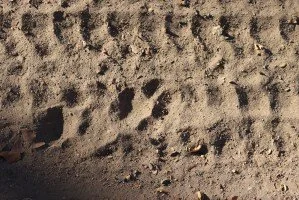Leopard Hunting - Equipment Used and Tips from a Namibian Professional Hunter
On a recent Safari to Namibia, I took a very nice leopard. The story about this hunt appeared in the 2021 September/October Issue of Sports Afield. What did not make it into the SA article was a list of all the equipment needed to take my trophy. What also disappeared during editing were PH Tips that I picked up along the way. I thought you guys might find these two lists interesting and helpful if you dream of going on your own leopard Safaris. Safari Details and Equipment
Outfitter: Jamy Traut Hunting Safaris
PH: Kabous Grünschloss
Tracker: Kapetja
Game Guard: Nico
Rifle: MG Arms Ultralight in 7mm Remington Magnum
Riflescope: Leupold VX-5HD 3-15x44mm CDS-ZL2
Ammunition: Custom reloaded by author using specifications from MG Arms - 62 grains of IMR 4831 powder, 162 grain Hornady ELD-X bullets
Fieldrest used for Mountain Zebra hunt: 4StableSticks Ultimate Carbon
Fieldrest used in Leopard Blind: 4StableSticks Sit Stick
Binocular/Rangefinder used to range blind-to-stand and sighting-in target: Vortex Fury® HD 5000 Rangefinding Binoculars
Tips from Veteran Professional Hunter, Kabous Grünschloss
In arid regions bury a carboy full of water at the base of the bait tree. The ‘full-service diner’ will attract and keep hungry and thirsty leopards in the vicinity longer.
On the first day of baiting, for maximum scent, lay down scent trails in the morning and afternoon.
In hot weather, replenish scent trails only in the afternoon. Scent dragged in the morning will burn off by evening when the cats are active.
For consistent size estimate, measure a leopard’s pad print rather than the entire footprint. For reference, my trophy male left a 2.5 inch wide pad print.
Set up trail cameras on every bait. Seeing what sex and size leopard is feeding provides the ultimate answer as to whether to wait at that bait site.
The Blind-Obstacle-Bait (“BOB”) system provides the best chance of keeping a leopard from finding the hunters in the blind. When choosing a bait site, identify an Obstacle between Bait and Blind – typically a dry riverbed, large open area, or embankment. Anything that will deter the cat from walking from the bait to the blind.
Once the cat has hit a bait, hang a high-in-fat content meat like a zebra back quarter. This has the best chance of holding your cat in that area.
Do not sit on the bait the day you put up the blind. Place articles of unwashed clothing into the blind, leave it open and wait until the next day to occupy the blind. This gives the leopard time to investigate the changes in the area and ‘get comfortable’ with those changes.
Leopards cannot count. If the leopard is comfortable with hearing a vehicle and people come and go near the bait site, once the trackers and game guards help the hunter and PH into the blind, their driving away will mean to the leopard that the coast is clear.
Use the Trail Cam photos to study the rosette patterns and the shape of the leopards in case there is, like in the tree from which the author shot his leopard, more than one cat feeding. That allows the PH to examine the cat and tell the hunter if it's the correct cat.
Use the Trail cam footage of the correct cat in different positions to quiz the hunter repeatedly(!) where he should aim.

